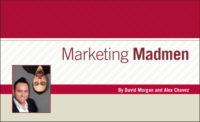In the digital age, having an effective landing page is crucial for any security industry marketing campaign.
A landing page, or a squeeze page, serves as a gateway to your website, providing a focused and targeted experience for visitors. A landing page is a standalone web page created specifically for the purpose of a marketing or advertising campaign.
They are distinct from other web pages in that they are designed to drive visitors to take a specific action, such as signing up for a newsletter, downloading a file, requesting information, signing up for a webinar or making a call.
So why should you use landing pages? The short answer is that they work. Research indicates that security businesses with 10-15 landing pages increase conversions by 55 percent over those with fewer than 10 landing pages.
But the trick is they have to be done right. There are key elements that can significantly impact your conversion rates and overall success. To help you create the ultimate landing page, here are some key tips and strategies to consider.
Define your goal: Before you start designing your landing page, clearly define your goal. What do you want to achieve with this page? Is it to generate leads, promote a product, or encourage sign-ups? Having a clear goal in mind will guide your design choices and ensure that your landing page remains focused.
Keep it simple: A cluttered landing page can confuse and overwhelm visitors. Keep your design clean and simple with a clear and concise message. Use minimal text, impactful visuals and a strong call-to-action (CTA) to guide visitors towards your intended goal. Avoid unnecessary distractions that could lead to a high bounce rate.
Craft compelling headlines: Your headline is the first thing visitors see, so make it attention-grabbing and compelling. Clearly communicate the value proposition of your product or service in a concise and engaging manner. Use action-oriented language to create a sense of urgency and entice visitors to explore further.
Use persuasive copy: The copy on your landing page should be persuasive and benefit-focused. Highlight the unique selling points of your product or service and explain how it can solve a problem or meet a need. Use bullet points, subheadings, and bold text to break up the content and make it scannable.
Incorporate social proof: Social proof, such as customer testimonials, reviews or trust badges, can significantly boost credibility and trustworthiness. Include snippets of positive feedback from satisfied customers or any relevant industry awards or certifications. This helps potential customers feel more confident in taking action on your landing page.
Design a strong CTA: Your call-to-action is arguably the most important element on your landing page. Make it highly visible and compelling. Use action verbs and create a sense of urgency. Experiment with different button colors and placement to optimize conversions. A/B testing — also called split testing or bucket testing — can help you determine the most effective CTA design for your audience.
Optimize for mobile: With the increasing use of smartphones and tablets, it’s crucial to ensure your landing page is mobile-friendly. Responsive design and fast loading times are essential. Test your landing page on different devices and screen sizes to ensure a seamless user experience across all platforms.
Implement clear (but minimal) navigation: While a landing page is designed to be focused and goal-oriented, it's still important to provide clear navigation options. Include a menu or link to your main website for visitors who want to explore more. However, be cautious not to distract visitors from the main goal of your landing page.
Use high-quality visuals: Visual elements, such as images, videos, or infographics, can enhance the appeal and effectiveness of your landing page. Choose high-quality visuals that are relevant to your message and align with your brand identity. Optimize image sizes for fast loading and consider using videos to showcase your product or explain its benefits.
Leverage technology partner searches: Consider landing pages that are focused on one particular technology partner and one solution.
Test and optimize: Creating the ultimate landing page is an ongoing process. Continuously monitor and analyze the performance of your landing page using web analytics tools. Conduct A/B tests to compare different versions of your page and identify areas for improvement. Test various elements, such as headlines, CTA buttons or color schemes, to optimize conversions.
By following these tips and strategies, you can create a highly effective landing page that maximizes conversions and achieves your desired goals. Remember to always keep your target audience in mind and regularly refine your landing page based on user feedback and data analysis. A well-designed and optimized landing page can make a huge difference in your marketing efforts.
How to Create the Ultimate Landing Page





